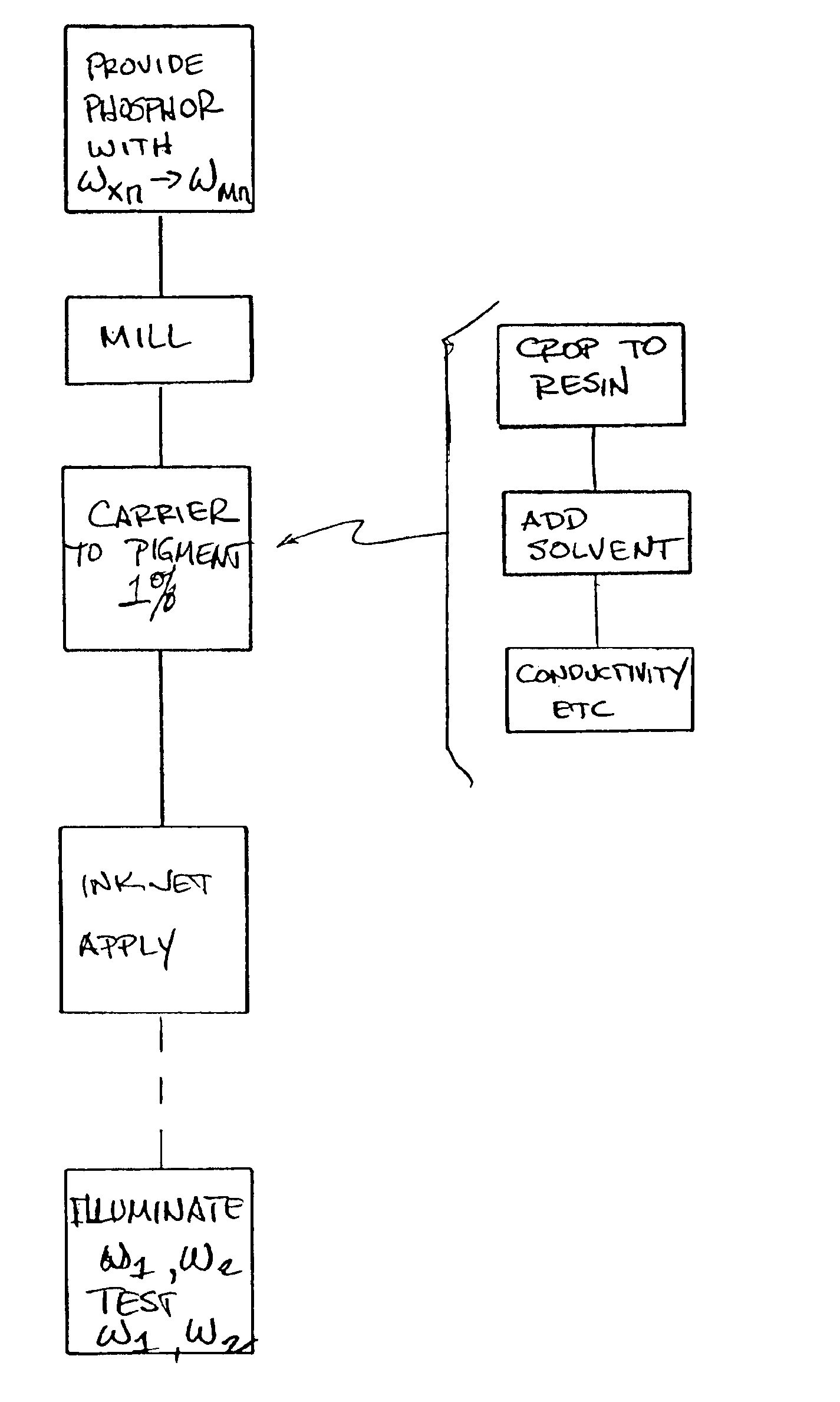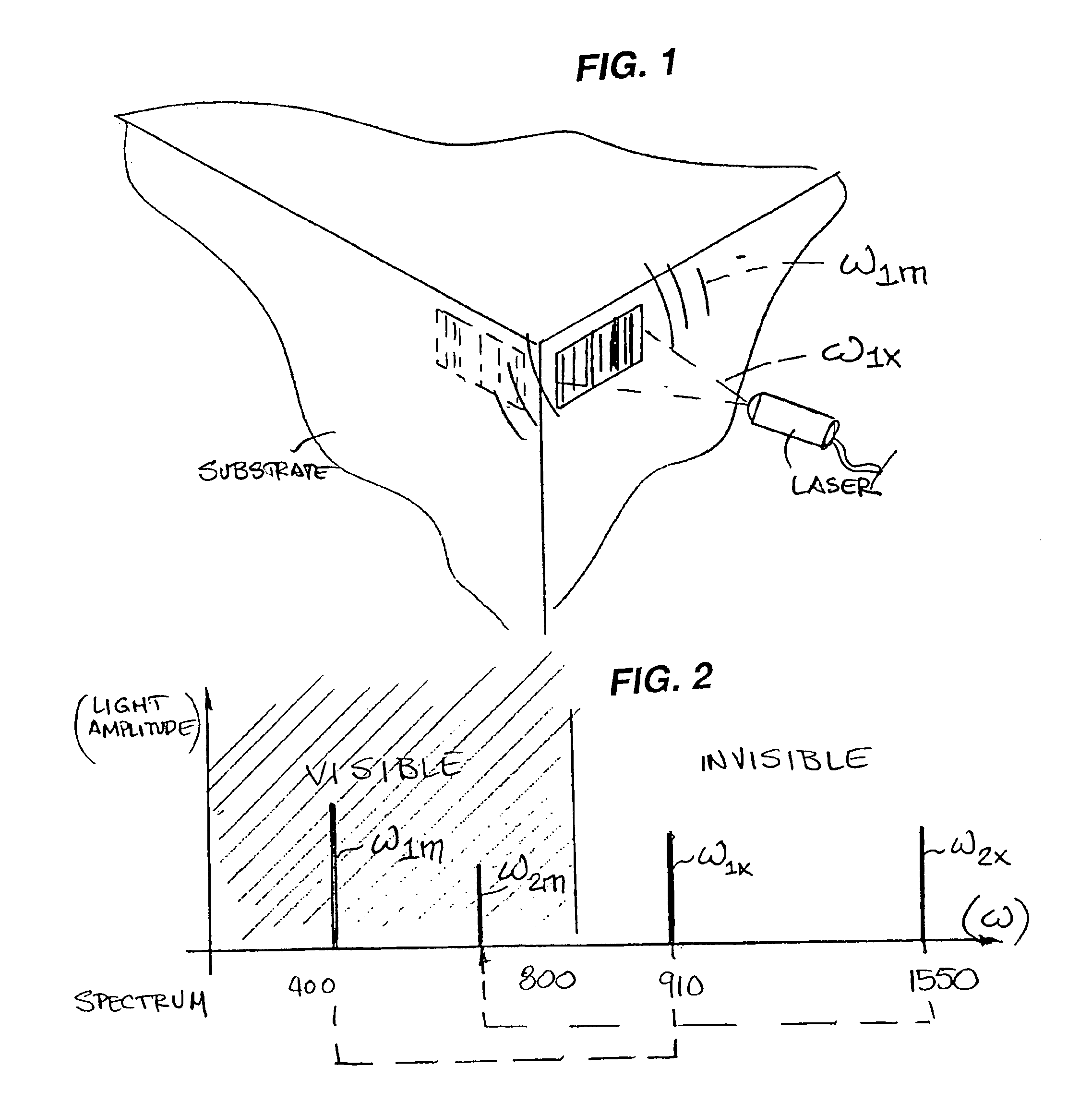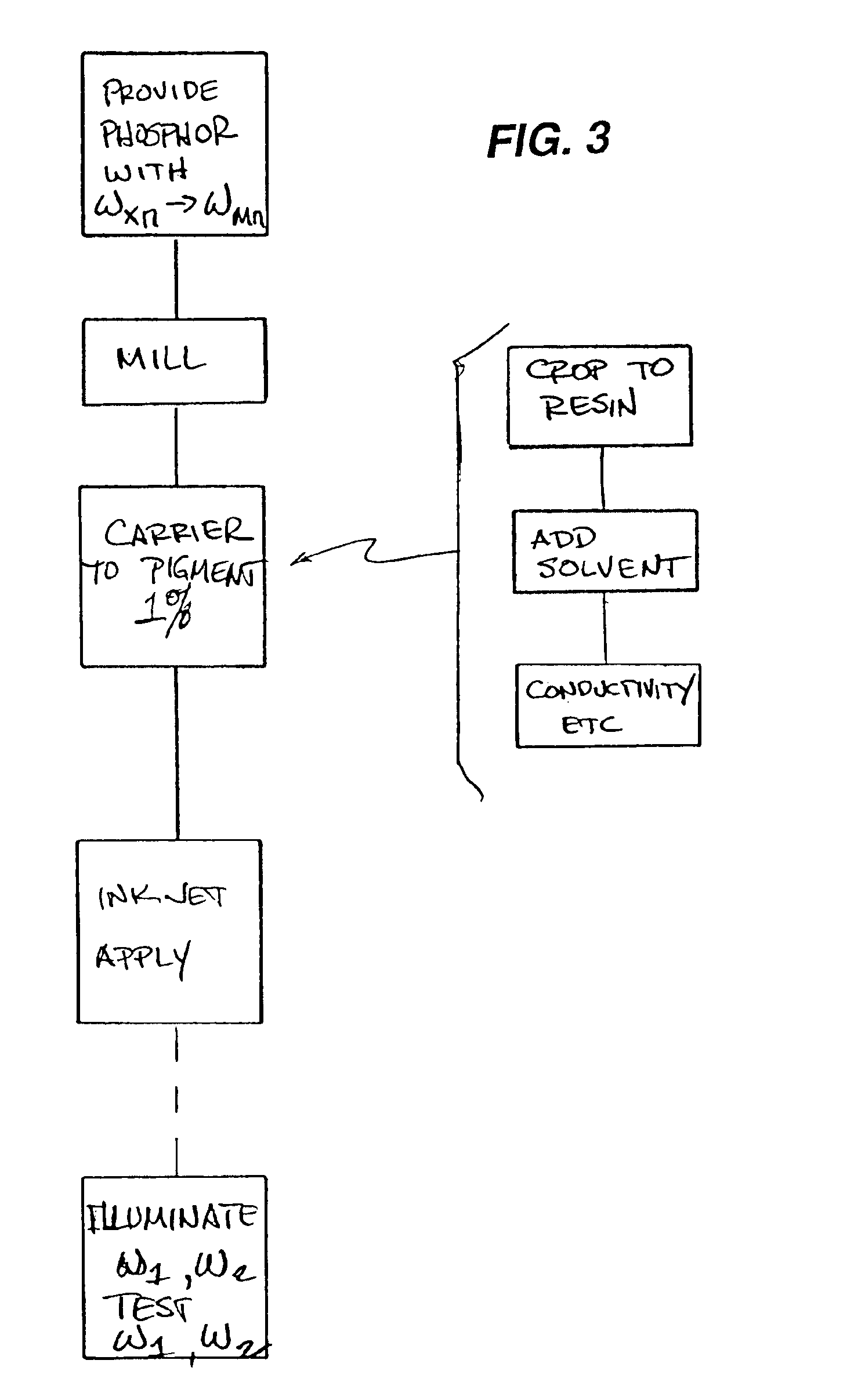Latent inkjet formulation and method
a technology of latent ink and formulation, applied in the field of latent ink and coating, can solve the problems of security ink that cannot be detected, constraints on the formulation of latent ink, and limits the extent to which the latent ink can serve the purpose of being readily visible under activation conditions, so as to facilitate identification, make the latent ink or coating difficult or impossible to remove or alter, and facilitate detection and/or reproduction.
- Summary
- Abstract
- Description
- Claims
- Application Information
AI Technical Summary
Benefits of technology
Problems solved by technology
Method used
Image
Examples
example 1
Inkjet Ink
An inventive process and the resulting inkjet ink have been found particularly effective, and appropriately resolve difficulties associated with small pigment particle sizes and high pigment material density to be suspended in an inkjet-capable liquid mixture. In producing the inkjet ink, an inorganic pigment (specifically a phosphorous pigment compound for use as a security ink) was milled and filtered to reduce its particle size to a maximum size of less than one micron, particularly below 0.8 microns. This milled material was then fixed to cellulose resin particles by a crushing technique, which yielded an inkjet ink that had good flow, adhesion and appearance aspects and did not need frequent agitation to prevent settling.
In the premix and preparation stage, an inorganic phosphorous pigment was provided, having a particle size up to 10 microns. The process is applicable to phosphor pigments having various optical properties. According to the particular application an a...
example 2
Inkjet Ink
The product to be processed was intended for inkjet printer application and to function as a security ink, namely to record a latent image that is invisible on normal inspection. For use with inkjet printing equipment, a benchmark requirement was a pigment particle size of less than 1.0 microns, to accommodate continuous droplet or on-demand droplet inkjet printing.
The ink was prepared in two main steps, namely preparation of the pigment particles and formulation of the inkjet ink comprising the pigment particles in a suitable carrier. Processing was begun by providing an inorganic insoluble pigment partcical mixture in an isopropyl alcohol (IPA) solvent. The pre-processing viscosity was 20 centepoise (cps). The mean particle size was 10 microns. With simple agitation in air, a mixture was obtained having 23% by weight solids (substantially all particles of inorganic pigment as described above, and 77% by weight IPA as the solvent.
The 10 micron particle size pigment and so...
example 3
Inkjet Ink from Reduced Particle Size Starting Pigment
For pigments that can be obtained with a relatively small particle size, it is possible to reduce the time required for cropping the pigment particles to resin particles. This also reduces the extent to which milling introduces unwanted potentially-visible opacity or color. Any added foreign particles may not only be visible as a faint grayness or dirty aspect, but also may tend to occlude the emission of light from excited pigment particles during read operations. Therefore if the ink formulation can employ very pure pigment particles, and if the purity can be maintained notwithstanding processing steps, then the resulting latent ink is improved both as to invisibility when latent and visibility when excited.
In high concentrations, pure pigment particles of the type described are advantageously light in color and typically may have a neutral light tan earth tone. At the low concentration of application discussed above, the pigme...
PUM
| Property | Measurement | Unit |
|---|---|---|
| diameter | aaaaa | aaaaa |
| particle size | aaaaa | aaaaa |
| density | aaaaa | aaaaa |
Abstract
Description
Claims
Application Information
 Login to View More
Login to View More - R&D
- Intellectual Property
- Life Sciences
- Materials
- Tech Scout
- Unparalleled Data Quality
- Higher Quality Content
- 60% Fewer Hallucinations
Browse by: Latest US Patents, China's latest patents, Technical Efficacy Thesaurus, Application Domain, Technology Topic, Popular Technical Reports.
© 2025 PatSnap. All rights reserved.Legal|Privacy policy|Modern Slavery Act Transparency Statement|Sitemap|About US| Contact US: help@patsnap.com



